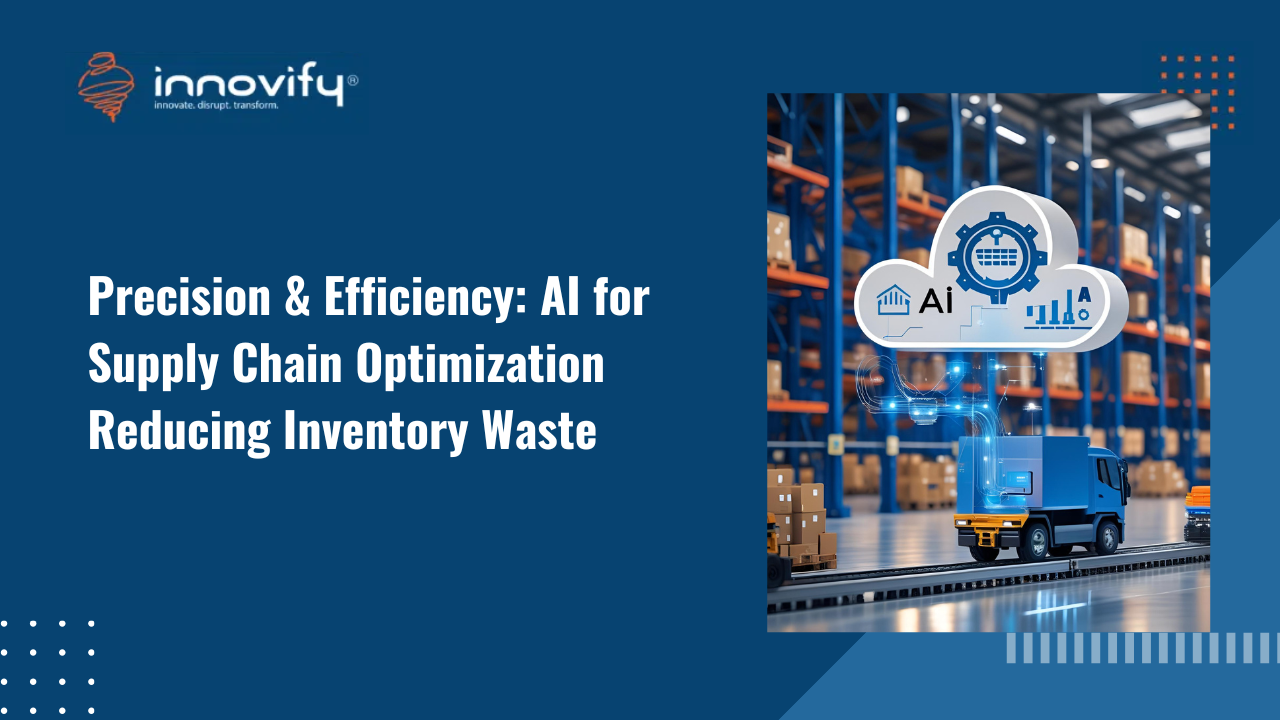Innovation
Web 3.0 Technology & Examples: The Future of Internet
What are Web 3.0 Technologies? Understand with Examples
The very first version of the internet, Web 1.0, was only a simple, read-only version of the internet. It allowed little functionality or flexibility to the users. For example, users were only allowed to read information from websites.
Web 2.0, the current stage of the internet, provided a little more flexibility than the previous generation. Web 2.0 gave users the ability not only to read but also to write, upload, send, and receive text, image, and video content via the internet.
As a result, Web 3.0 will undoubtedly be much better and more sophisticated than the internet we have today.
What is Web 3.0?
In Web 3.0, a decentralized internet economy takes place, free of any central authority. Blockchain technology has the potential to make this happen and significantly improve the internet. Web 3.0 has the ability to open up a whole new universe of online services and can change how we use the internet.
People may earn money by selling their digital content in the form of NFTs. When Web 3.0 is widely adopted, blockchain technology, such as decentralized applications (DApps) and smart contracts, will become more prominent.
Before we move to understand the technologies behind Web 3.0 and their relevant examples, let’s first understand the features Web 3.0 brings along.
8 Key Features of Web 3.0
Web 3.0, also known as the Semantic Web, is the next stage in the evolution of the Internet. It is being designed to be more intelligent, connected, and decentralised than the current web. Web 3.0 is characterised by various features that aim to provide users with more personalised, secure, and immersive experiences on the web while also enabling greater privacy and security. Overall, Web 3.0 is expected to usher in a new era of innovation and transformation on the Internet.
1. Decentralization
Web 2.0 databases maintained by internet giants like Meta and Google might be dismantled if individuals gain more power. With Web 3.0, information is found based on its content rather than a single location, thus becoming decentralized. It adheres to a fundamental principle: computers search for data stored at a single location, using the HTTP protocol to access distinct web addresses.
2. Peer-to-Peer
Through decentralized peer-to-peer data networks, Web 3.0 will allow users to sell their own data, maintaining ownership control. Data will be captured and processed by various powerful computing resources, such as appliances, mobile phones, desktop computers, cars, and sensors.
3. Decentralized Apps (dApps)
Because Web 3.0 will be decentralized and based on open-source software, it will also be trustless (participants can interact directly without going through a centralized trusted intermediary) and permissionless (individuals will be able to access without seeking approval from a governing body).
Web 3.0 apps—dApps for short—will operate on blockchains, decentralized peer-to-peer networks, or a mixture of the two. These decentralized apps are referred to as dApps.
4. Semantic Web
The semantic web would allow computers to analyze data and decode the meaning and emotions they are attempting to express, especially if the connection between words is properly defined. This would result in a superior and more satisfying internet user experience.
5. Expansion of AI & ML
An information-processing system that works like a human brain will be available on the Semantic Web in Web 3.0. Using machine learning, a form of artificial intelligence (AI) that copies human learning by collecting data and using algorithms, Web 3.0 will be able to process information in the same way humans do.
Instead of current efforts focused on targeted advertising, which makes up most of them, these capabilities will result in faster and more accurate outcomes in a range of sectors, such as medical research and material development.
6. 3D Graphics
The three-dimensional virtual world will become a reality with Web 3.0, thanks to new graphics technology. The use of 3D graphics will make the internet user experience more immersive, and it will be beneficial in changing a variety of sectors, such as health, e-commerce, real estate, etc.
7. Ubiquity
Ubiquity refers to the vision of a more seamless and interconnected internet that can be accessed anywhere and on any device. It aims to eliminate the barriers between different platforms and devices, enabling users to access the same data and services from any location without any limitations or restrictions.
Ubiquity is made possible by the decentralized architecture of Web 3.0, which allows for the seamless exchange of value and data across different platforms and ecosystems. Users can interact with digital content and services more fluidly and intuitively without being tied to a specific device or platform.
Ubiquity is a critical feature of Web 3.0, as it can transform how we interact with technology and create new opportunities for innovation and collaboration across different domains and industries.
8. Supporting the metaverse
Supporting the metaverse is the ability of the decentralised web to provide a platform for the creation, sharing, and interaction of virtual worlds and immersive experiences.
The metaverse is a concept of a shared virtual space where customers can interact with each other in real-time, engage in various activities such as gaming, socialising, and commerce, and even build their digital assets and economies.
Web 3.0’s interoperability, decentralisation, and security features enable the development of the metaverse, creating new opportunities for innovation and collaboration.
Web 3.0 is all about a decentralized world where big players like Google, Meta, and even the government have no control over the network. But what technologies make all this happen?
Let’s get to know them one by one.
Technologies That Make Web 3.0 Happen
Web 3.0 technology sets are open to more than just a single sector or organization, even though there are organizations dedicated to their development and expansion.
1. Augmented, Virtual, and Mixed Reality
Virtual reality (VR), augmented reality (AR), and mixed reality (MR) are among the Web 3.0 technologies that are making the metaverse, a Web 3.0 phenomenon, a reality.
Metaverse is a term from the novel “Snow Crash” from 1992. However, the metaverse you know is a recent Facebook rebranding that brought the metaverse to mainstream attention. The metaverse is not yet a concrete reality, but it is a 3D immersive world where we will spend much time socializing, working, enjoying, and learning.
2. Blockchain
Blockchain technology is the one technology that inspired the notion of Web 3.0, and so it is the most explicit illustration. The Web 3.0 ecosystem relies on blockchain technology, so it is critical to the future of Web 3.0.
A blockchain ledger is a record of transactions. It is spread across a wide network of computers and can be accessed by anyone. Every time a new ‘block’ of transaction is added to the chain, the system requires all database copies to agree and be amended. All transactions are permanently recorded and, therefore, open to public view.
Blockchain technology can be used for a multitude of applications, but it is most commonly associated with cryptocurrency. Because validated databases are distributed across the internet, no central authority can control them.
3. Crypto
No central authority controls cryptocurrency; instead, it is a decentralized digital currency. For this, blockchain technology is used to record how much currency is available and who has how much.
Crypto is a viable Web 3.0 technology as there is no fiat currency like dollars or euros on the blockchain network, so cryptocurrencies such as Bitcoin and Ethereum can be used to make online payments without fiat money.
In addition, governments can devalue savings held in fiat currencies over time by using inflationary policies to manipulate them.
4. NFT
NFTs are a key part of Web 3.0. In essence, NFTs are like crypto in nature, but each one is unique and does not interconvert with another. That’s the non-fungible component of the term. NFTs are used to represent digital or physical assets in the same way that a paper title deed for a home does.
Though you’re simply purchasing control over a string of numbers and letters at this stage, any legal authority does not necessarily recognize NFTs, so the future of this technology is uncertain, just like cryptocurrency.
5. Edge Computing
When it comes to online data and services, edge computing seeks to place them as close as possible to where they are requested or generated. Big data computing, in which computer centers are used to process large amounts of data, is the opposite of edge computing, which takes place at the edges of the network.
Data centers have adopted commoditized personal computer technology to serve web 2.0 clients, but Web 3.0 is moving data center functionality out to the edge and, in some cases, getting data right into our hands.
6. AI & ML
Despite the presence of AI and ML features in web 2.0, human-based systems still account for the bulk of activity, leaving the door open to corruption, such as rigged ratings, biased product evaluations, human errors, etc.
For instance, customers may leave feedback on any product or service on AI-powered internet review services like Trustpilot. However, a firm may pay a large number of people to write positive reviews for its products or services, and the results will be manipulated.
In contrast, AI & ML, built on top of decentralized data structures, can enable applications ranging from targeted advertising to far more interesting experiences.
8 Examples of Web 3.0
Virtual assistance, EdTech apps, social networking platforms, messaging apps, and exchange services, among other things, are already using Web 3.0 technology.
We assume you’re already aware of some of the Web 3.0 implementations like crypto, metaverse, etc. Hence, we won’t cover them here. Here, we’ll focus on the most innovative and famous Web 3.0 implementations.
Let’s get to know the most popular Web 3.0 examples:
1. IDEX
IDEX is a decentralized exchange that prioritizes speed and user experience. It allows traders to purchase and sell tokens using a variety of cryptocurrencies, including Bitcoin (BTC) and Ethereum (ETH). IDEX can accommodate large volumes of trading activity with minimal latency. In addition to providing an exchange, IDEX has an integrated wallet that allows you to keep your funds safe.
2. Wolfram Alpha
Wolfram Alpha is a Web 3.0-powered computational intelligence platform. The platform can provide answers to users from a variety of fields, including mathematics, nutrition, and science. It integrates with other apps in the ecosystem to gather information from their databases and delivers it to end users.
Wolfram Alpha is more efficient and provides more accurate results than it did in web 2.0. Siri is a big fan of Wolfram Alpha.
3. Steemit
One of the most famous examples of Web 3.0 social network websites is Steemit. It is a decentralized platform that runs on the Steem Blockchain social media model.
Steemit rewards bloggers or content creators with cryptocurrencies for contributing content on the site. Web 3.0 rewards contributors’ crypto in a secure environment, which is precisely where it becomes important.
4. Sola
Sola is an example of a Web 3.0 social network. It is a social platform powered by distributed nodes, the Ethereum blockchain, and IPFS.
Unlike Steemit, Sola uses blockchain AI to create social networks and media hybrids. All involved parties, including third-party developers, the core team, and the users, are incentivized and rewarded for creating viral content.
Sola uses AI to filter out any undesirable content and doesn’t solely rely on user responses to distribute posts. In addition, users are paid Sola’s proprietary virtual currency and action points, which they can use to endorse other users’ content or spend on their own content.
5. Storj
Storj is a cloud storage platform that offers secure, distributed storage. It is an open-source, peer-to-peer cloud storage marketplace where users may rent out their unused hard disk space in exchange for STORJ tokens. Users may purchase or sell excess storage capacity on their hard drives at any time through Storj’s peer-to-peer marketplace.
6. Audius
Artists can get paid directly by fans using Audius’s blockchain-based music-sharing platform. Using artificial intelligence and machine learning, Audius compares songs to find ones that match listeners’ tastes. As a result, Audius eliminates the need for middlemen like SoundCloud or Spotify by paying artists directly.
7. Axie In
In Axie Infinity, players collect digital creatures named Axies (thousands of them available) and battle other players online for real money (using in-game currency). They may use their Axies to battle against other people’s Axies, train them to become stronger over time, or even trade them.
8. Brave Browser
Brave Browser is an open-source web browser that blocks advertisements and trackers by default, making it faster and safer than your current browser. Brave also gives you a share of the advertising revenue if you choose to support your favorite sites with BAT tokens.
3 Benefits Of Web 3.0
Web 3.0, also known as the decentralized web, is an emerging paradigm that aims to provide a more secure, transparent, and decentralized online experience. At its core, web 3.0 relies on a set of technologies and frameworks that enable the creation of decentralized applications (dApps) that run on peer-to-peer networks rather than on centralized servers controlled by a single entity. Let’s discuss a few of the benefits.
1. Privacy and Security
Web 3.0 provides better privacy and security than traditional web applications by allowing users to own and control their data. It means that users can have greater confidence that their data is secure and protected, lowering the risk of data leaks and hacks. Web 3.0 achieves this through decentralised technologies such as blockchain, which enables encryption and other security measures, ensuring user data is protected from unauthorised access.
2. Interoperability
Web 3.0 enables interoperability between different blockchain networks and protocols, allowing for the seamless exchange of value and data across other platforms and ecosystems. It can facilitate innovation and collaboration across various domains and industries.
3. Intelligent Data
Web 3.0 uses AI and ML to extract meaning and context from data, enabling more intelligent and personalised user experiences. This can enable better decision-making, inform business decisions, policy-making, and more.
5 Potential Risks of Web 3.0
While Web 3.0 promises to revolutionise the internet by providing more decentralisation, security, and privacy, it also has its own set of risks and challenges. Here are some potential risks associated with Web 3.0:
1. Security Risks
While blockchain technology provides a high level of security, it is not immune to hacks and attacks. Web 3.0 relies heavily on blockchain and smart contracts, which can be vulnerable to bugs, hacks, and exploits. It can lead to loss of funds, data breaches, and other security threats.
2. Lack of Regulation
Web 3.0 operates in a relatively unregulated space, which can lead to scams, fraud, and other illegal activities. The lack of clear regulatory frameworks and standards can also make it difficult for businesses to operate and for users to trust the technology.
3. User Adoption
Web 3.0 is still in its early stages of development and adoption, and it may take some time for users to understand and embrace the new technology fully. It could slow down the growth and adoption of Web 3.0 and its associated applications.
4. Privacy Risks
Web 3.0 relies heavily on decentralised identity solutions, which can raise privacy concerns. Users may be required to share personal information to use certain services or applications, and this data could be vulnerable to theft or misuse.
5. Energy Consumption
Some Web 3.0 applications require significant energy, which can have negative environmental impacts. As the technology scales and more users adopt it, energy consumption could become an important issue.
5 Key Challenges of Web 3.0 Technology
While Web 3.0 holds a lot of promise for revolutionising the way we interact with digital content and services, there are also potential challenges that need to be addressed. Here are some of the main challenges facing Web 3.0:
1. Technical complexity
Web 3.0 is based on decentralised technologies such as blockchain, which are still relatively new and complex. It means that there is a steep learning curve for developers and users alike, which could slow down adoption and limit the ecosystem’s growth.
2. Scalability
One of the biggest challenges facing Web 3.0 is scalability. Blockchain networks are limited in terms of the number of transactions they can process per second, which could become a bottleneck as more users and applications join the network. While solutions are being developed to address this issue, such as sharding and layer-2 protocols, they are still in their early stages and must be tested at scale.
3. Interoperability
While Web 3.0 aims to enable interoperability between different blockchain networks and protocols, achieving this goal is more accessible. Various networks have other technical specifications, governance models, and economic incentives, which could make it easier to achieve seamless interoperability without compromising on security or decentralisation.
4. User experience
While Web 3.0 promises to offer more control and privacy to users, it could also create a more complex and fragmented user experience. Users must manage their private keys, navigate different wallets and interfaces, and learn about new concepts such as gas fees and intelligent contracts. It might hinder the ecosystem’s growth by discouraging fewer tech-savvy consumers.
5. Regulation
Web 3.0 could also face regulatory challenges, particularly concerning privacy, security, and anti-money laundering (AML) regulations. Governments and regulatory agencies are still trying to figure out how to oversee decentralised systems and software, which could create uncertainty and legal challenges for developers and users alike.
Welcome to the New Age
With blockchain powering Web 3.0, people will have full control over their data and privacy, and companies will be able to utilize it (or not). All this will happen in the future internet.
Therefore, Web 3.0 will increase the honest and open usage of user data, from cross-platform development tools to customized search results and 3D graphics. The web will become more immersive and active as a result.
Innovify, a London-based digital product studio, offers the best new product development for companies adopting Web 3.0 technology.
FAQs
Q1: How does Web 3.0 benefit our lives?
Web 3.0 technology offers a number of benefits that can improve our lives. It enables greater data privacy and security, as well as more transparency and control over our personal data. It also facilitates decentralised applications and platforms not controlled by a central authority, leading to more democratic and fairer systems. Additionally, Web 3.0 technology allows for more efficient and cost-effective transactions, potentially reducing the need for intermediaries and associated fees.
Q2: What language will Web3 use?
Web3 is not a specific programming language but rather a collection of technologies and protocols that enable decentralised applications and platforms. There are a number of programming languages that can be used to develop Web 3.0 applications, including Solidity, JavaScript, and Rust, among others.
Q3: What are some examples of Web 3.0 apps?
Some examples of Web 3.0 apps include blockchain-based social networks like Steemit. Decentralized platforms like OpenSea and Rarible allow users to buy, sell, and trade digital assets such as NFTs (non-fungible tokens) and cryptocurrencies without the need for intermediaries.
Q4: What is the relationship between Web3 and AI?
Web3 and AI are not directly related, but they can be used together to create innovative new products and services. For example, AI can be used to power smart contracts and decentralised decision-making systems.
Q5: What are some Web 3.0 products that are currently available?
Some Web 3.0 products that are currently available include Brave, a privacy-focused web browser that rewards users with cryptocurrency, and Golem, a decentralised supercomputer that allows users to rent out their computing power.
Q6: How does Web 3.0 design differ from previous iterations of the internet?
Web 3.0 design differs from previous iterations of the internet in that it places a greater emphasis on decentralization, peer-to-peer networks, and user control over data and information.
Q7: Can you provide some more examples of Web 3.0 technology in action?
Additional examples of Web 3.0 technology in action include Augur, a decentralized prediction market platform, and Status, a mobile app that provides access to decentralized messaging and Web 3.0 applications.




